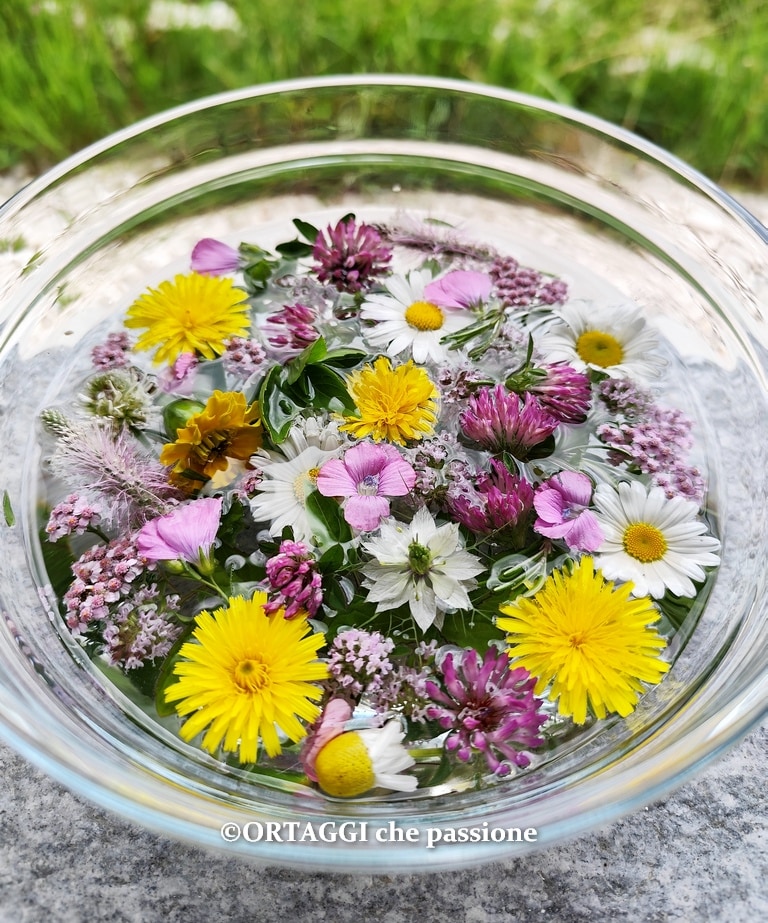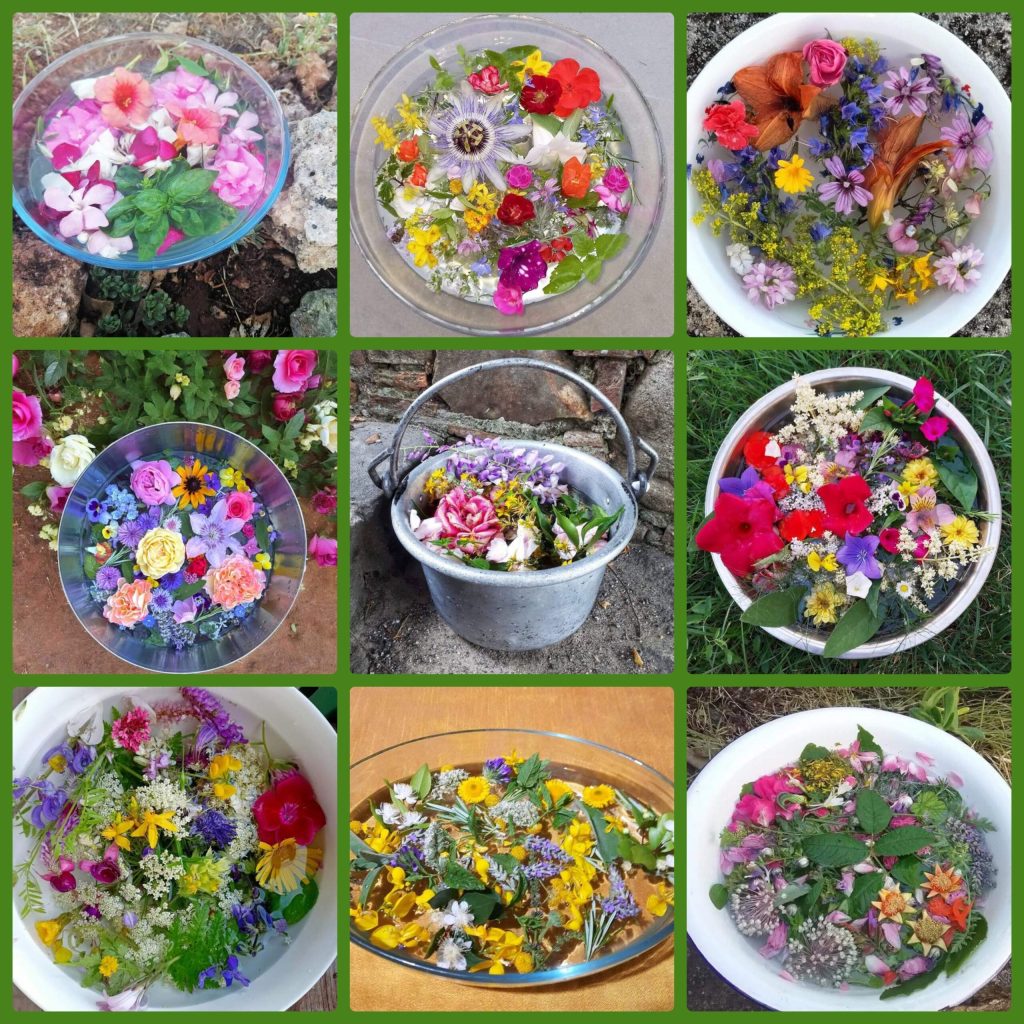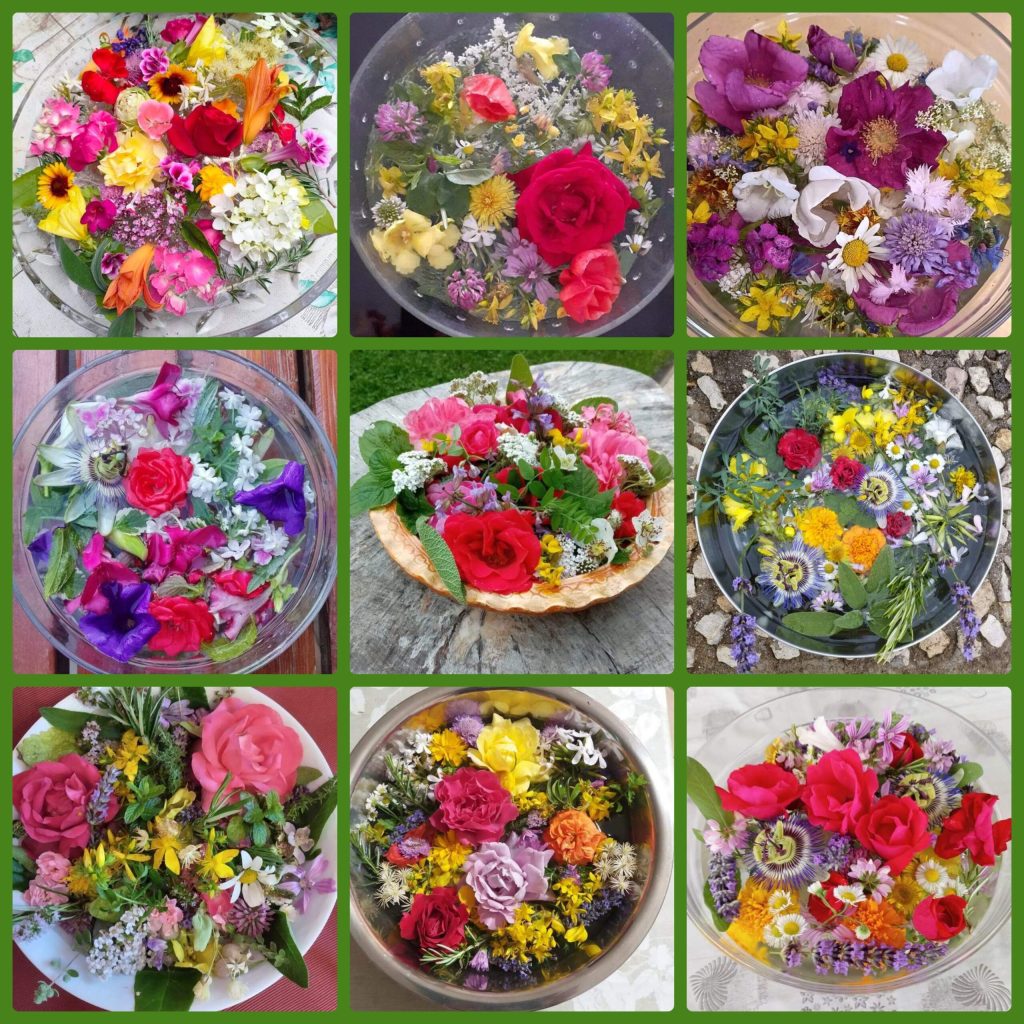What is the meaning and history of the Water of Saint John? What are the phrases and what is the prayer for the Water of Saint John? What to do if it rains on Saint John’s night? Where do you put the Water of Saint John? When is it made? How is it made? What is it for? If you have all these questions, I will now answer all your doubts.
HISTORY – The Water of Saint John is an important propitiatory rite of the farming world that is celebrated on the night between June 23rd and 24th. A magical moment intertwined with the summer solstice, marking the start of the harvest season and the gradual shortening of daylight hours. This rite, aimed at protecting the harvest (to ward off violent storms, plant diseases, drought, and dangerous weather events, thus safeguarding the crops for a lush summer harvest), is rooted in popular beliefs and farming practices, representing a magical moment of connection with nature.
Moreover, the feast of Saint John the Baptist is one of the oldest and most suggestive celebrations in the Christian liturgical calendar. Washing the face and eyes with the dew water of the holy night was a ritual for obtaining health (for vision and body, to regrow hair, heal the skin, and grant fertility) and for warding off evil and illness. This gesture symbolized a rebirth, recalling the baptism of Saint John, for purification before participating in liturgical ceremonies.
This legend, once limited to rural areas, has spread to urban environments in recent years (thanks to social media). A suggestive rite that creates a bond with nature and offers spiritual purification, simple gestures that bring luck and harmony. It is a tradition that speaks of love for the land, respect for traditions, and hope for the future.
On the same night, the Boat of Saint John is prepared (while on the night between June 28th and 29th, the vessel of Saint Peter known as the Boat of Saint Peter and Paul is prepared).
Rural recipes with flowers and wild herbs

- Difficulty: Very easy
- Rest time: 10 Hours
- Preparation time: 10 Minutes
- Seasonality: Summer
Water of Saint John
- to taste edible flowers
- to taste aromatic herbs
- to taste water (preferably spring water)
Tools
- Bowl glass
Preparing the Water of Saint John is a fascinating and simple ritual that combines beauty and tradition with a touch of magic, regardless of personal beliefs.
Water of Saint John
On June 23rd, gather a mix of edible flowers, petals, leaves, aromatic and wild herbs from your area or cultivated in your garden or on your balcony:
– yarrow
– amaranth
– wormwood
– oats: abundance
– artemisia: wards off evil eyes and curses
– basil
– calendula
– chamomile
– cumin
– helichrysum
– ferns
– wild fennel: sharpens perception in deceit
– cornflowers
– flowers of wild berries
– leaves from fruit trees
– St. John’s Wort: powerful protection against evil spirits
– lavender: purification, happiness, love, and peace
– flax
– marjoram
– mallow
– daisies
– lemon balm
– mint: refreshing and purifying
– myrtle
– nigella
– poppies
– passionflower
– rose (dog rose or cultivated roses): beauty and love
– rosemary: memory, strength, and protector against negative situations
– rue
– elder
– sage: purifying
– marigold
– dandelion
– clover
– verbena
If you know other herbs or flowers you use in your Water of Saint John, leave a comment.
🍀🍀🍀🍀
The farming custom requires gathering after sunset on June 23rd (depending on the Italian city, approximately from 8:30 PM to 9:15 PM).
The more recent tradition advises gathering herbs after 5:00 PM or in the late morning when essential oils are at their peak.🍀🍀🍀🍀
On the evening of June 23rd
1. fill a bowl (preferably glass) 3/4 full with spring water (alternatively tap water)
2. pour the plant mix into it
3. after sunset, place the bowl outside (in the garden, on the terrace or windowsill), so that it remains exposed all night to the dew and moonlight.🍀🍀🍀🍀
On the morning of June 24th
4. bring the fragrant water inside
5. use it to wash your face and hands
6. while washing, you can recite a prayer or propitious phrases (from your heart or chosen from the ones below).Filling your mind with positive words and good wishes will help amplify the energies of nature.

The ritual of the Water of Saint John is divided into three main phases, each containing deep meanings.
Gathering of herbs: represents knowledge and respect for nature.
Exposure of water to the night: symbolizes abandonment and trust in the energy of the night.
Bath with the Water of Saint John: embodies purity and rebirth, evoking a sense of spiritual renewal.
Phrases
“Magical water of Saint John, take away all our troubles/ills”
“Water of Saint John bless me and bring me luck for the whole year.”
“Water of Saint John protect my body and spirit.”
“Water of Saint John bring me joy, health, and prosperity.”
“Water of Saint John bring new energy into my life.”
Prayer
“Saint John the Baptist,
who was called by God to prepare the way for the Savior of the world
and invited the people to penance and conversion,
grant that our hearts be cleansed from evil
so that we may become worthy to welcome the Lord.
You who had the privilege of baptizing in the waters of the Jordan the Son of God made man
and pointing him out to all as the Lamb who takes away the sins of the world,
obtain for us the abundance of the gifts of the Holy Spirit
and guide us on the path of salvation and peace.
Amen.”
Prayer
“Saint John the Baptist,
you who prepared the way for the Savior
and invited to penance and conversion,
purify our hearts from evil
to welcome the Lord.
You who baptized the Son of God
and pointed him out as the Lamb of God,
obtain for us the gifts of the Holy Spirit
and guide us towards salvation and peace.
Amen.”
SAYINGS
“the dew of Saint John chases away all ills”
🍀🍀🍀🍀
WATER OF SAINT JOHN as a gift
Any leftover water can be filtered from the flowers and poured into small bottles to give to friends or relatives. Alternatively, during the day, you can use it to wet your wrists and temples.
The water of Saint John should be used by June 24th, as it does not keep.
🍀🍀🍀🍀
The FLOWERS, instead, should be scattered in the garden or field, so their energy can spread into the surrounding nature.
🍀🍀🍀🍀
If it rains, gather the herbs, aromas, and flowers during moments of light or no rain.
During the night, place the bowl outside in a sheltered spot, like under a balcony or porch. Alternatively, leave it on the inner windowsill of an open window to still capture the night’s energy.
CROWNS OF SAINT JOHN
In Eastern and Northern Europe, as well as in some regions of Italy, Saint John’s crowns are made by braiding fresh and flexible twigs to insert the herbs and flowers gathered on June 23rd. These crowns, either worn or hung on doors, provide further protection against negative forces.
FAQ (Questions and Answers)
What is the Water of Saint John used for?
The Water of Saint John is used for purification, bringing luck, protection against evil, and promoting health and beauty. Washing with this water on the morning of June 24th is a rite symbolizing rebirth and spiritual purification, believed to guarantee a prosperous and serene year.
How is the Water of Saint John Baptist made?
The Water of Saint John Baptist is made by gathering edible herbs and flowers on June 23rd and, after sunset, immersing them in a glass bowl filled with water. This bowl is left outside overnight to collect the dew until morning.

